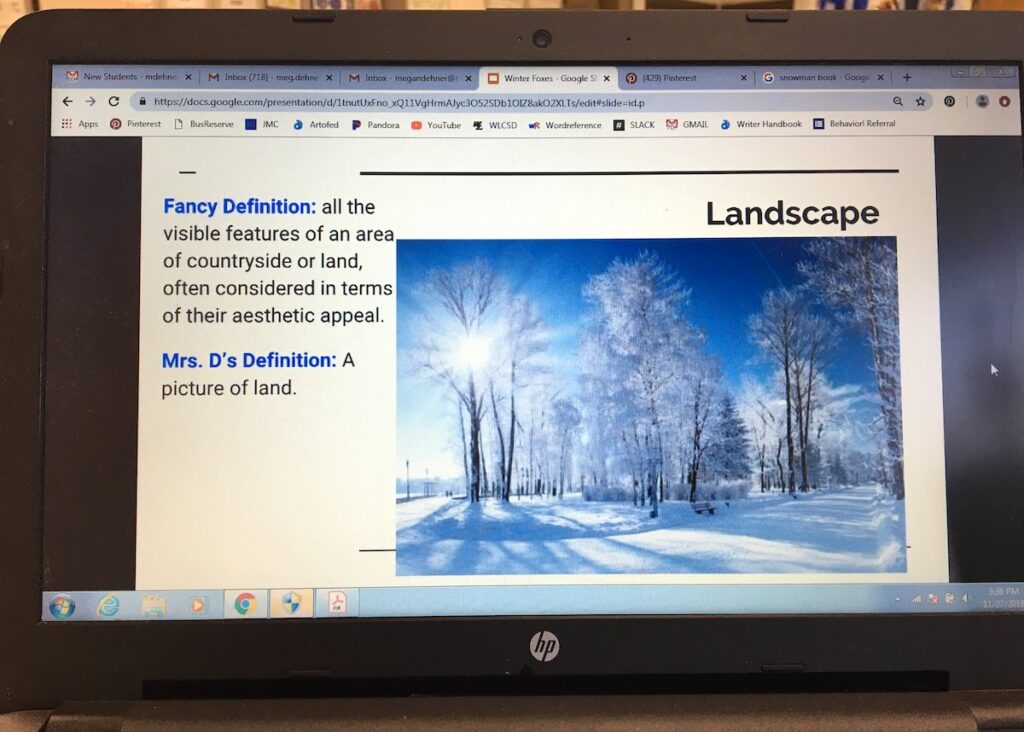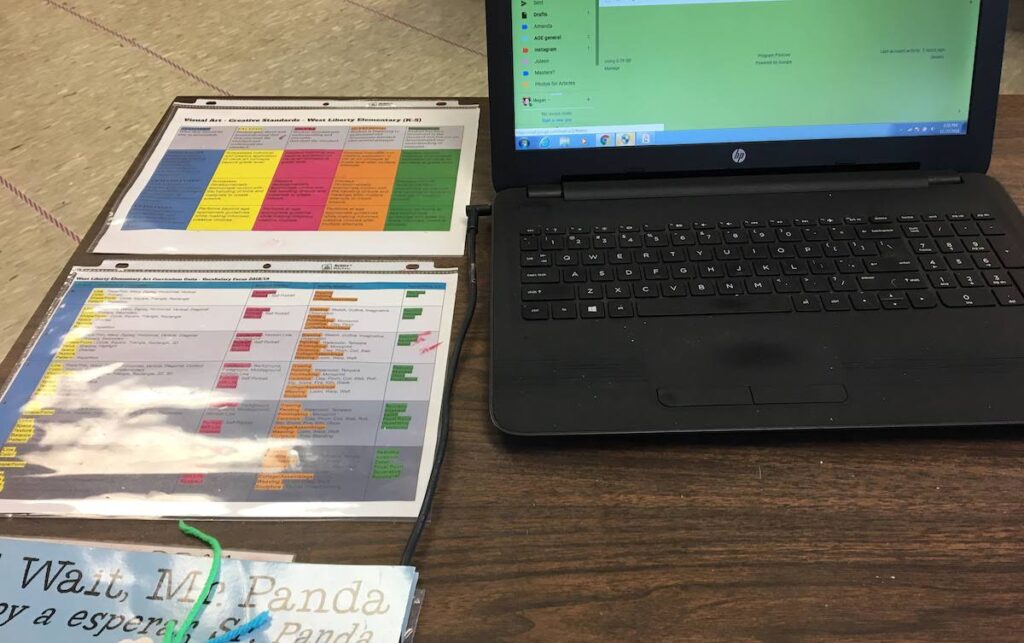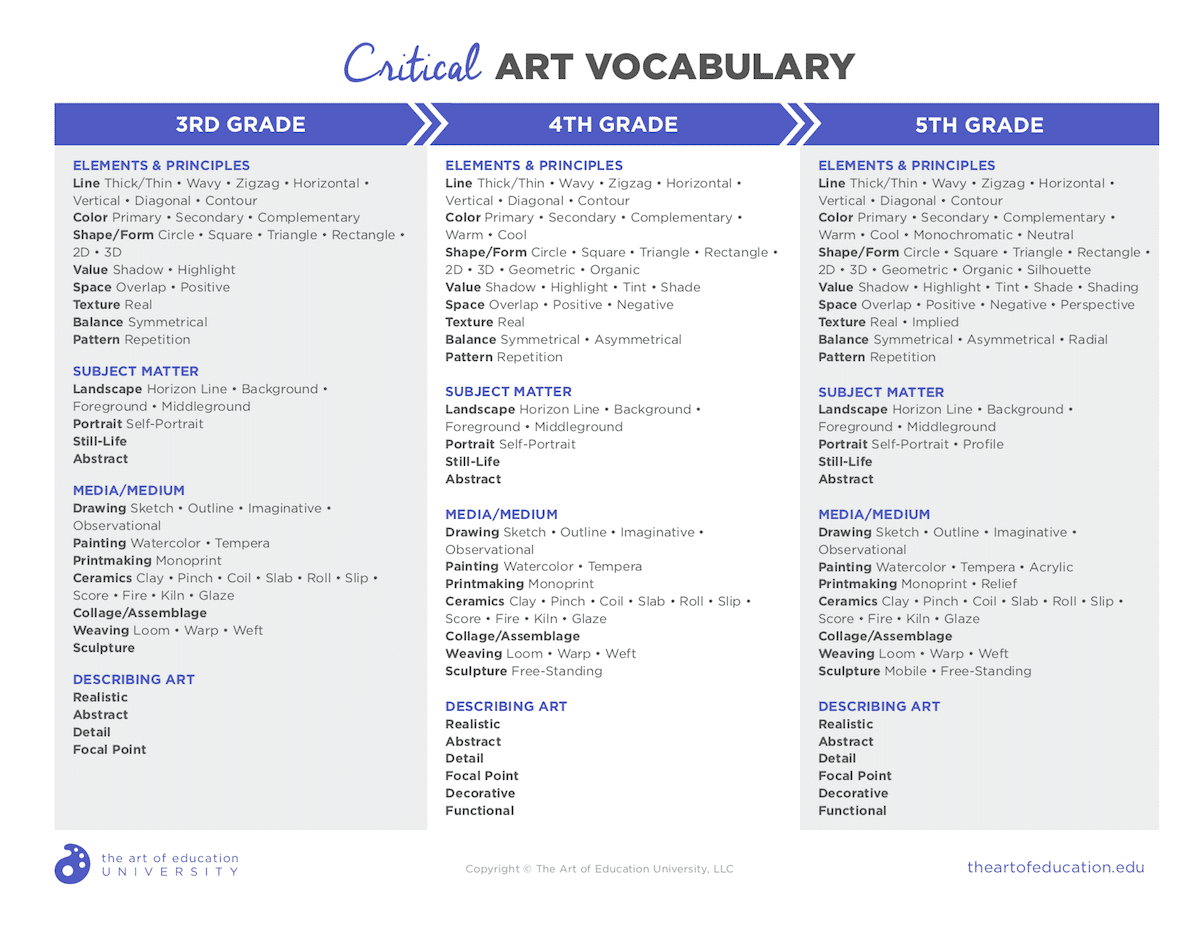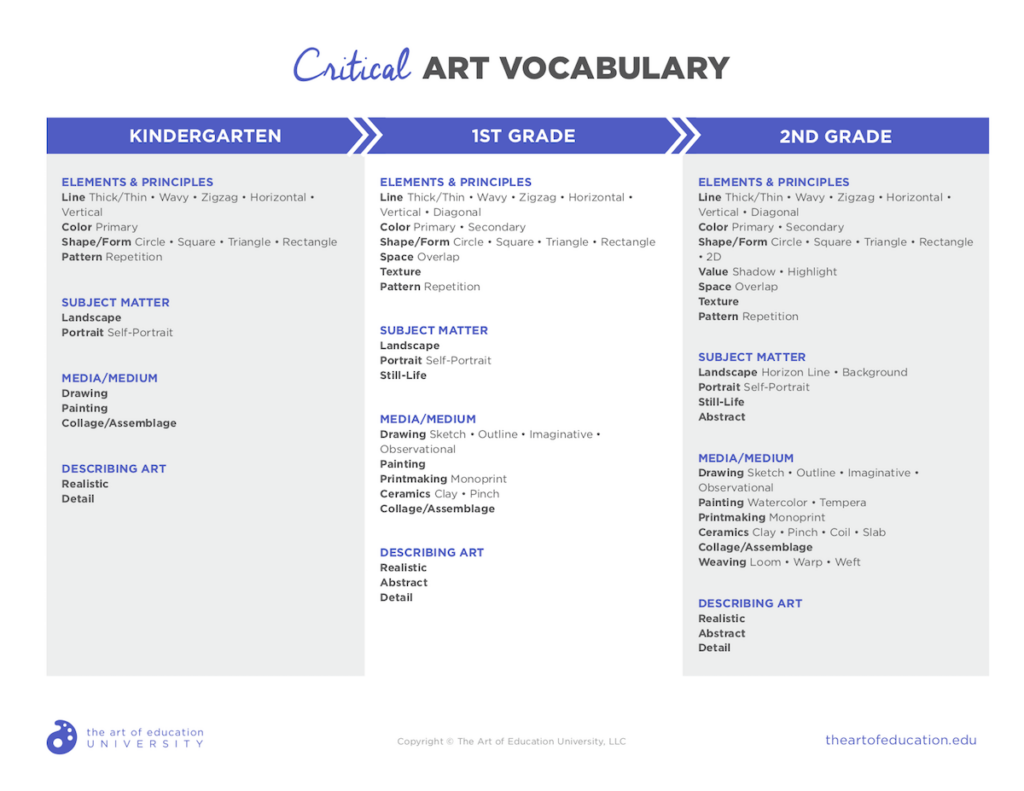As art teachers, we know words matter. “Roller” vs. “brayer,” “paint” vs. “ink,” “6B” vs. “6H.” When choosing tools and talking about techniques, the vocabulary we use is important. This is also true for the students in our classrooms. If we want them to think and work like artists, they should be using the correct terms.
But, have you ever heard of critical art vocabulary?
Let’s take a look at critical vocabulary and how you can use it in your classroom.

What is Critical Art Vocabulary?
Critical vocabulary is a buzzword from the Common Core, a nation-wide standards-based initiative for English Language Arts and Math. Vocabulary words deemed critical are verbs like “analyze,” “synthesize,” “compare,” and “contrast.” The National Core Visual Art Standards are filled with them.
Critical visual art vocabulary, however, has a different, more specific lens and includes:
- Words found in the elements and principles like “line,” “pattern,” and “shape.”
- Subject matter words like “self-portrait” and “landscape.”
- Media words like “printmaking,” “ceramics,” “painting,” and “sculpture.”
- Descriptive terms like “realistic” and “abstract.”
What do all of these have in common? They are critical to the understanding of art. In a simplistic nutshell, critical art vocabulary words are words and concepts you wish students would always remember in your classroom. (If you’re interested, AOE has a thorough elementary list here.)
These are the words you want every student to know for them to do their best work.
How To Identify Critical Art Vocabulary
Depending on your district and classroom requirements, you might have standards-based visual art vocabulary already in place. Wonderful! However, like anything standards-based, you have to consider your students, your supplies, and the amount of time you have as you teach.
If you already have standards in critical art vocabulary in place, it is time to reflect.
- How is it functioning?
- Does it align with the National Core Visual Art Standards?
- Do you use it as a scaffolding guide or as a once-in-a-blue-moon reference?
- Does it need updating?
Art teachers are skilled educators, but we are often guilty of “having it in our head” and can miss opportunities to reinforce vocabulary to our students.
If you do not have an established critical art vocabulary benchmark in place, you can create your own!
Art teachers are skilled list and chart-makers. By referencing the National Visual Art Standards, your state or district standards, and your experience, you can assemble your own scaffolding of critical art vocabulary. It may require some time and thinking, but it will be well worth it. It will also be an impressive artifact to show off in your own teaching portfolio.
We have an example below to get you started
As you gather your tools to identify your critical vocabulary list, think about the terms and concepts you wish students already knew walking into your classroom.
This is grade-level dependent, but are you finding you need to re-teach things year after year? For example, are you introducing secondary color-mixing every school year with every grade level? Wouldn’t it be great if you taught it in first grade and students remembered it for second grade? Yes! Identifying critical art vocabulary can help you accomplish this goal.
Ways To Use Critical Art Vocabulary
Once you have established words that build upon each other for your own curriculum, use them. Chances are you already use your vocabulary words, and maybe your students are well-versed in many of them. However, the key is intentionally using them.
Here are 6 ways to weave them into your lessons and units.
1. Write Them Into Class Objectives
Many educators use “I can” statements or a goal at the start of a project or class. Making critical vocabulary a part of every class objective is a way to introduce and reinforce concepts. To take it a step further, underline or bold the critical words.
For example, instead of “Today I can create a color wheel by mixing colors.” Write and say, “Today I can mix the primary colors red, yellow, and blue, to make the secondary colors green, purple, and orange to paint my own color wheel.” The more specific you can be, the better.
2. Make Them Visible
Art teachers love a good display. Why not make critical words more visible by making them a permanent part of your classroom? You can either add the words as they are learned, or put them all up at once. Point them out and reference them as they are used in the classroom. Even better, add visual clues to the words for students.
3. Explain both the “Fancy Definition” and the “Teacher Definition”

Art concepts can be complicated. Break them down and describe them in both “fancy” or dictionary/textbook terms and “simple” teacher lingo. Students will have better recall of the words later.
A “teacher definition” is how would you describe something to your students without extra information. As an added benefit, the “fancy” definition exposes students to new words without the pressure of knowing them. This method is also great for you as the teacher. You know your students best and can decipher the best way to present concepts. It allows you to have a bit more control as students build on their critical vocabulary.
4. Create A Jingle
Take advantage of the human ability to remember an annoying jingle! Sing the principles and elements to the tune of Mary Had a Little Lamb, name all the types of lines to Twinkle Twinkle Little Star, or use YouTube to help you introduce color. This is not just for the younger grades. Slapping a song on something will also allow you to sing the jingle again and again as you build on units from grade to grade.
5. Say Them Out Loud
This may seem obvious, but ACTUALLY using the vocabulary on a daily basis is essential. If you are not using the words on a consistent basis, your students certainly will not. This can take intentional practice.
Let’s look at an example regarding giving students feedback. Instead of saying, “What a beautiful blue!” be more intentional. You might say, “I love how you used the blue tint next to its complementary color, orange!”
You might feel a little silly at first, but soon enough it will become common practice.
6. Use a Cheat Sheet

Art teachers have a lot on their plates. Make your life easy. Give yourself a break. Instead of memorizing all the critical vocabulary and their scaffolding levels, print out a copy and make it a permanent part of your desk/planning/preparation area. Reference it as needed. This way, you can ensure you are building on the critical art vocabulary you have worked so hard to put in place.
Identifying, using and implementing critical art vocabulary may seem like a daunting task. Do not be overwhelmed. Art is an entire content area for a reason. Cut yourself some slack! Start small by making a list of words you want your students to know and remember as they create. Choose one way to practice vocabulary in the ways listed above and assess from there.
What critical art words do you find yourself having to re-teach year after year?
What are your best practices for teaching important art words and concepts to students?
Magazine articles and podcasts are opinions of professional education contributors and do not necessarily represent the position of the Art of Education University (AOEU) or its academic offerings. Contributors use terms in the way they are most often talked about in the scope of their educational experiences.






